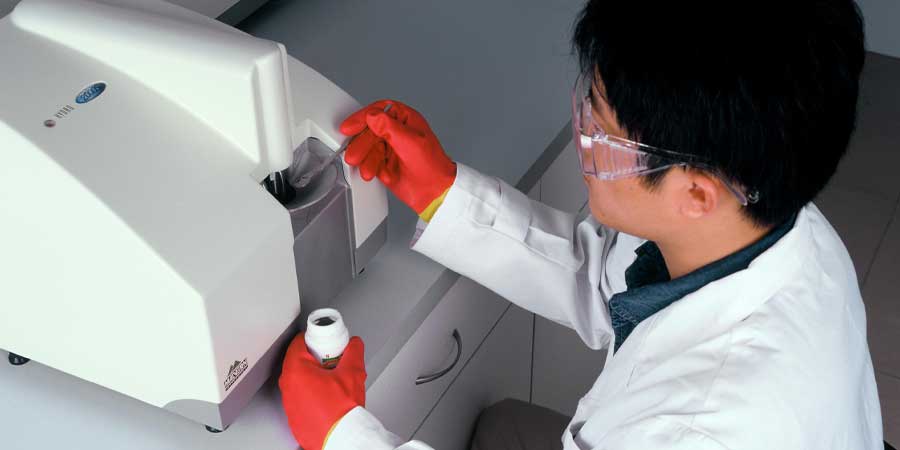Cement PSD and Water Demand

Cement particle size distribution and water demand
Concrete customers usually prefer cement with a low water demand for economic reasons; they need less cement to achieve the target concrete strength and slump.
Cement factors impacting the concrete water demand include:
- Cement composition, including the presence of supplementary cementitious materials such as fly ash or limestone
- Cement content
- Cement chemistry, such as C3A, alkalis, and SO3 forms
- Cement fineness
- Clinker minerology/microstructure
- Concrete admixtures used
However, water demand is often discussed in a general manner without specific reference to paste, mortar, or concrete. Typically, it is the paste water demand for normal consistency that is referenced, as it is the most common methodology, and is an integral part of determining setting times. However, this rarely relates directly to the water demand of concrete.
PSD and paste water demand
Paste water demand is strongly influenced by the physical properties of cement powder, particularly the particle size distribution (PSD) and Blaine specific surface area (SSA), which in turn influences the packing behavior or voidage of the powder. Higher packed voidage leads to higher water demand for normal consistency. The water required to reach a target consistency is dependent on the volume of water required to fill the physical void space, together with the water that is adsorbed by the particle surface area.
A narrower cement PSD results in a lower packed density and a higher voidage. A narrower PSD is characteristic of cement produced in more efficient grinding systems such as vertical roller mills and modern closed-circuit mill systems equipped with third-generation separators.
There is a strong relationship between the standard consistency paste water demand with the PSD and SSA of the cement powder.
The PSD is most simply identified by the slope of the Rosin-Ramler equation - with high slope index equating to a narrower distribution. A narrower cement PSD directly leads to increased paste water demand and higher Blaine surface area also increases the paste water demand.
However, these factors are less relevant for concrete water demand, with narrower cement PSD having minimal impact and higher Blaine SSA in fact lowering the water demand from a physical point of view. These effects can be demonstrated in concrete mixes using blast furnace slag of different fineness and PSD. Higher paste water demand also results in longer set times. This is due in part because higher voidage requires more reaction products to fill the space before penetration is reduced in the set time test.
Conclusion
Concrete water demand is important for strength and cement content, but should not be confused with the water demand for standard consistency of cement paste (which is typically used to determine set times). These are two separate issues. Concrete water demand directly influences the workability and/or strength and the resulting cost of concrete. Paste water demand is an intermediate property for determining set times.
Paste water demand is strongly influenced by the physical properties of the powder, while concrete water demand is more strongly influenced by the cement chemistry and clinker microstructure.
Tags
- Cement Grinding
- Cement production
- Concrete admixtures
- OPTEVA™
- Producer
- Sustainability
- TAVERO™